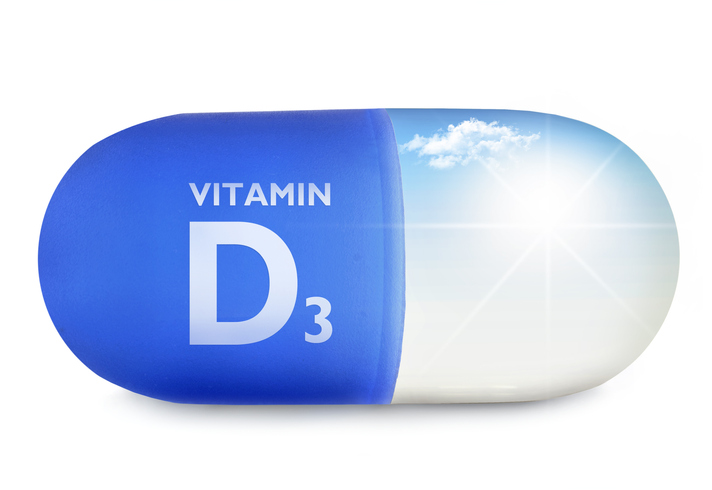Vitamin D And Health: Sun, Food or Supplement?
Vitamin D has been a hot health topic for years now. Most people are aware that low levels result in weaker bones and more susceptibility to illness. Without vitamin D, only 10–15% of dietary calcium is absorbed. (1) Since teeth and jaws are mostly calcium, I understand how critical vitamin D is for a healthy mouth. Read my post on calcium here. The medical profession has come to understand the importance of adequate levels of vitamin D and more of my patients are on supplemental vitamin D today as compared to past years. Despite this, one study found that 77% of Americans are deficient in vitamin D. (2) Emerging research supports the role of vitamin D in fighting cancer, heart disease, fractures and falls, autoimmune diseases, influenza, type-2 diabetes, and depression, and yes, cavities. The most at-risk populations for deficiency are darker skinned people, older adults, people with fat malabsorption, people with limited sun exposure and people with gastric bypass. (3)
Discovery
Vitamin D was discovered by Elmer McCollum. (4) Around that time, Edward Mellanby proved that cod liver oil cured rickets. McCollum removed vitamin A (the first vitamin discovered) from cod liver oil and found it still cured rickets. The assumption was that there was an adiditional agent in the oil that was responsible for its beneficial effect. The concept that there existed agents that are essential to the health of plants and animals but do not provide energy and are not used structurally was new at the time. The word “vitamin” was coined to describe them. It was a combination of “vita” meaning life and “amine” meaning an ammonia-like substance (an erroneous assumption). The letter comes from the trend of using the alphabet instead of numbers to sequence them as they were discovered.
Early History
Vitamin D underwent a change in its classification as a vitamin to a hormone over subsequent years. It was noted soon after kidney dialysis was in wide use that many of the patients developed bone mineral loss reminiscent of vitamin D deficiency. (5) The trend started when it was discovered that a section of the kidney activated vitamin D into its useful form. (6) It was found that the body makes vitamin D out of cholesterol. Kidney specialists and endocrinologists subsequently realized that vitamin D had a wide array of benefits for growth and development and it is now categorized more as a hormone than a vitamin. (5)
The Vitamin D-Sunshine Link
The link between vitamin D and sunshine goes back to the recognition by doctor Sniadecki that rickets is cured by sun exposure. As I mentioned earlier, rickets is a result of low vitamin D status and the two are intimately related. This has been proven numerous times experimentally and is not in dispute. The best way to treat vitamin D deficiency is through sun exposure (7) and I will tell you why later in this post. Unfortunately when it is winter in temperate and arctic climates, the sun is not strong enough to enable us to make vitamin D. This correlation is so strong, it has resulted in genetic adaptation. Because of the devastating effects of uncured rickets on children of northward migrating people, they were unable to survive and have children of their own. Only lighter skinned people were healthy enough to survive and have children giving rise to light skin. (5) Even with light skin, the use of clothes renders sun exposure useless, making dietary vitamin D extremely important. The surprising fact is that this shift to light skin happened AFTER the advent of agriculture where vitamin D from the diet became inadequate. (8) No agricultural products contain vitamin D that we can use, it must come from animal sources.
Why We Avoid The Sun or A Little Knowledge Is Dangerous
A 2016 paper concluded that public health authorities in the United States are recommending that men, women and children reduce their exposure to sunlight, based on concerns that this exposure will promote skin cancer. Sadly, the only risk to people who get adequate sun exposure but do not burn is non-melanoma skin cancers (squamous and Basal) which take years to spread. On the other hand, the risks of inadequate sun exposure include increased risks of all-cause mortality (meaning the sum total of EVERYTHING that will kill you), colorectal cancer, breast cancer, non-Hodgkin’s lymphoma, prostate cancer, pancreatic cancer, hypertension, cardiovascular disease, metabolic syndrome, type 2 diabetes, obesity, Alzheimer disease, multiple sclerosis, type 1 diabetes, rheumatoid arthritis, psoriasis, non-alcoholic fatty liver disease, statin intolerance, macular degeneration and myopia. To put it in reverse, getting adequate non-burning sun decreases the likelihood of all-cause mortality, colorectal cancer, breast cancer, non-Hodgkin’s lymphoma, prostate cancer, pancreatic cancer, hypertension, cardiovascular disease, metabolic syndrome, type 2 diabetes, obesity, Alzheimer disease, multiple sclerosis, type 1 diabetes, rheumatoid arthritis, psoriasis, non-alcoholic fatty liver disease, statin intolerance, macular degeneration and myopia. The amazing finding in the same 2016 paper is that the decrease in these conditions was independent of vitamin D status, demonstrating that sun exposure does more than just increase vitamin D. (9)
Who Doesn’t Enjoy A Little Sunshine?
Since there are 20 mostly serious risks to not getting enough sun versus one relatively minor one for getting adequate non-burning sun exposure, the choice should be clear. Unfortunately, public health officials have been very vocal about skin cancer and silent on all the terrible risks of avoiding sun exposure. I think most people would agree that getting 10 or fifteen minutes of direct sunlight just feels good. Burning in the sun or sitting in the dark feels bad. Sun exposure has actually been scientifically linked to increased serotonin which is the “feel good” neurotransmitter. Therefore sunlight decreases Seasonal affective disorder (10), depression (11) and Migraines (12). Best of all, the release of β-endorphins (natural pain relievers) by sun exposure could be a natural reward mechanism encouraging sun exposure. (14) When an adult wearing a bathing suit is exposed to one minimal erythemal dose of UV radiation (a slight pinkness to the skin 24 h after exposure), the amount of vitamin D produced is equivalent to ingesting between 10,000 and 25,000 IU. (15)
Food Sources
The best sources of vitamin D are from the fish salmon, sardines and herring, shellfish like oysters and shrimp, and organ meat especially Liver. Other sources are eggs including the yolks and full fat non-pasteurized milk. Pasteurizing milk destroys the vitamin D and it must be artificially added back. Vegetables lack vitamin D completely.
Supplementation
If you have spent any time on this site, you know that I place supplementation last in my hierarchy of strategies to achieve adequate nutritional status. In light of the studies discussed in the paper entitled “The risks and benefits of sun exposure 2016” found health outcomes related to sun exposure independent of vitamin D, health outcomes dependent on serum 25(OH)D levels but not vitamin D supplementation, and health outcomes dependent on mediators other than vitamin D, it is apparent that vitamin D supplements are not an effective substitute for adequate sun exposure. (16) The amount to supplement with varies from person to person and from season to season, so I am not going to recommend a specific amount. It is best to have your levels checked by your health professional. A minimum level of 30 ng/ml if 25(OH)D is needed to avoid deficiency.
Summary
· Vitamin D is extremely important
· The best source is a little sunshine
· A little sunshine is very good for you
· Too much sun is bad for you
· The best oral source is from foods like salmon
· Supplements are a last resort
· 30 ng/ml is the minimum blood level
Imagine this scenario, you drive to your favorite clam bar, knock back a half dozen, continue on to the beach and play frisbee for ten minutes and go home. What could be healthier for your vitamin D status and overall health?







